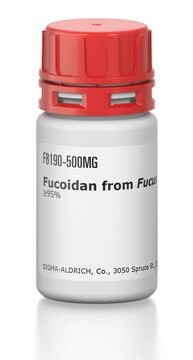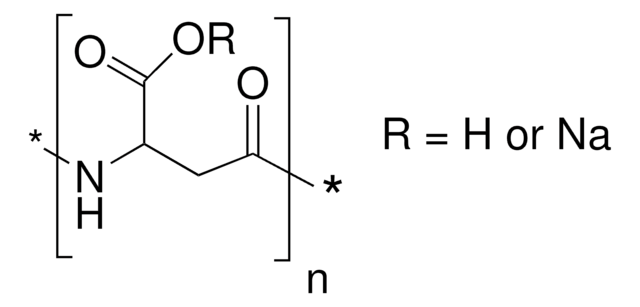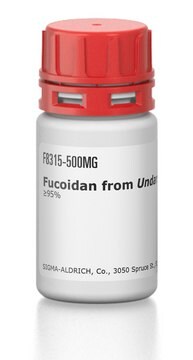P4154
Polyinosinic acid potassium salt
Homopolymer
Sinónimos:
Poly(I) potassium salt
Iniciar sesiónpara Ver la Fijación de precios por contrato y de la organización
About This Item
Productos recomendados
biological source
synthetic (organic)
Quality Level
assay
≥98% (TLC)
form
lyophilized powder
solubility
water: 4.80-5.20 mg/mL, clear to hazy, colorless to faintly yellow
storage temp.
−20°C
¿Está buscando productos similares? Visita Guía de comparación de productos
Application
Polyinosinic acid (Poly(I)) is a homopolymer of inosine that may be used with polycytidylic acid (poly(C)) to form the double-stranded homopolymer (Poly(I) • Poly(C)). TLR3 recognizes double-stranded RNA and is a major effector of the immune response against viral pathogens. (Poly(I) • Poly(C)) is a used as a model RNA to study cell signaling at the level of TLR3. Poly(IC) is a TRIF-dependent toll-like receptor-3 (TLR3) ligand.
Preparation Note
Prepared from IDP using polynucleotide phosphorylase.
Storage Class
11 - Combustible Solids
wgk_germany
WGK 3
flash_point_f
Not applicable
flash_point_c
Not applicable
ppe
Eyeshields, Gloves, type N95 (US)
Elija entre una de las versiones más recientes:
¿Ya tiene este producto?
Encuentre la documentación para los productos que ha comprado recientemente en la Biblioteca de documentos.
Los clientes también vieron
Overlapping and distinct roles of GRK5 in TLR2-, and TLR3-induced inflammatory response in vivo.
Packiriswamy N, Parvataneni S, Parameswaran N.
Cellular Immunology, 107-111 (2011)
Xingbo Wang et al.
Veterinary microbiology, 251, 108895-108895 (2020-10-31)
RNA binding ability and cellular distribution are important for nonstructural protein 1 (NS1) of influenza A virus to act as a viral regulatory factor to control virus life cycle. In this study, we identified that the N-terminal residues 19-21 of
Gennady Dvoryanchikov et al.
Nature communications, 8(1), 760-760 (2017-10-04)
Taste buds are innervated by neurons whose cell bodies reside in cranial sensory ganglia. Studies on the functional properties and connectivity of these neurons are hindered by the lack of markers to define their molecular identities and classes. The mouse
Activation of chemokine and inflammatory cytokine response in HCV-infected hepatocytes depends on TLR3 sensing of HCV dsRNA intermediates.
Li K, Li NL, Wei D, Pfeffer SR, et al.
Hepatology, 55(3), 666-675 (2011)
Caiqi Ma et al.
International journal of oncology, 54(2), 572-584 (2018-11-30)
Gastric cancer is one of the most malignant tumor types, and its metastasis is a notable cause of mortality. Among the methods of tumor metastasis, lymphatic metastasis is the predominant one in gastric cancer. A previous study reported that the
Nuestro equipo de científicos tiene experiencia en todas las áreas de investigación: Ciencias de la vida, Ciencia de los materiales, Síntesis química, Cromatografía, Analítica y muchas otras.
Póngase en contacto con el Servicio técnico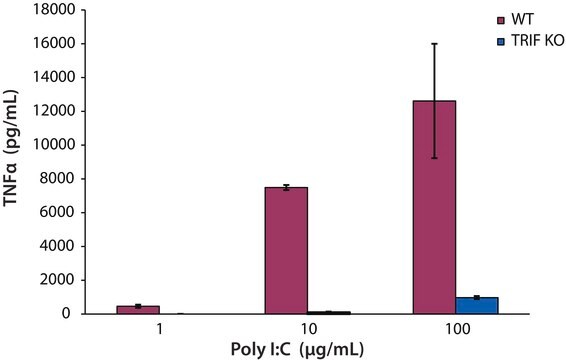
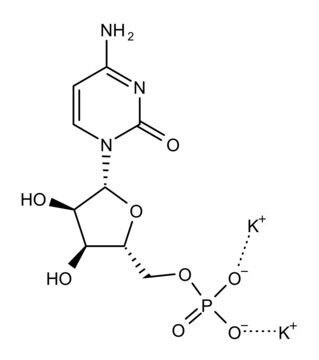
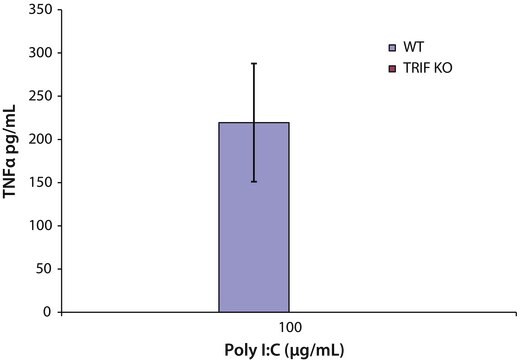



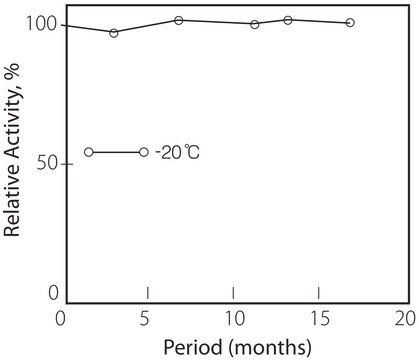

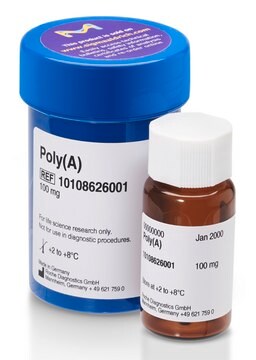
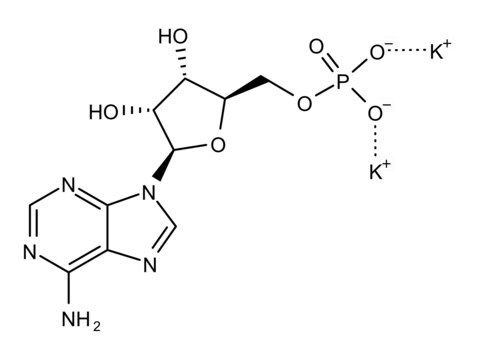
![Poly[d(I-C)] lyophilized, pkg of 10 U (10108812001 [A<sub>260</sub> units]), pkg of 50 U (11219847001 [A<sub>260</sub> units])](/deepweb/assets/sigmaaldrich/product/images/352/091/ef743cea-ccd8-44f1-8f3b-dec5a1e4f5d1/640/ef743cea-ccd8-44f1-8f3b-dec5a1e4f5d1.jpg)

